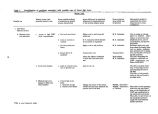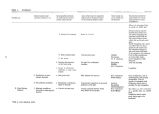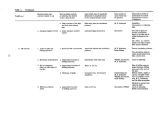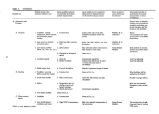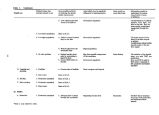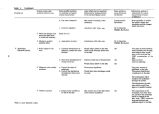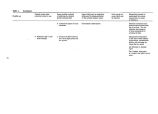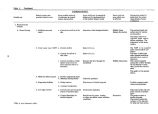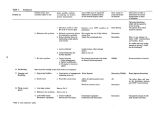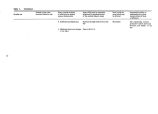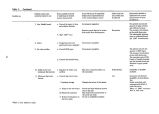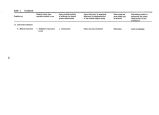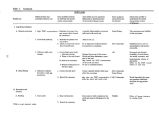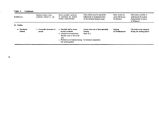| OCR Text |
Show ington Bay at various salinity levels. The biotic system research needs are listed in Table 14. Water Quality Aspects Water quality is presently the top priority research need for the physical system. The present and future water quality of the bay will influence and perhaps eliminate certain potential uses. The initial need is to assess the extent of the current water quality problem. As part of the Weber River 208 Water Quality Planning Study preliminary data are being gathered on the present water quality of the bay. The data gathered for the study will hopefully indicate the extent of the water quality problem and help in identifying areas where further study is needed. The future water quality of the bay will be influenced by the salinity. For example, the survival of coliform bacteria and the concentration of dissolved oxygen both decrease with increasing salinity. Potential uses of the bay also indicate what water quality parameters should be investigated to assess the impact on social uses of the present or future water quality. Recreational swimming, no matter what the salinity, requires the bay or swimming area to be relatively free of pathogenic organisms. Meide and Nich- oles ( 1972) studied the occurrence of coliform bacteria in the bay. They proposed that the unstabilized organic material deposited in the bay harbor coliform bacteria and provide nutrients for the bacteria which contribute to the potential health hazard. The present distribution of coliform bacteria, the link with the sludge deposits on the bottom, and their survival at various salinity levels of the bay should be researched. The present nutrient levels in the bay may be sufficient to create an over abundance of algae which would detract from swimming, water skiing, and power or sail boating. The potential impact the supply of nutrients has on the bay identifies data on the inflow and present distribution of nutrients as a data need. The potential for anaerobic decay and the associated production of noxious odors could impact on recreational uses of the bay and the Great Salt Lake State Park. The bottom sediments by themselves provide the potential for anaerobic conditions to develop. This problem may be accentuated by the increased rate of decomposition in fresher water, the additional stress put on the dissolved oxygen supply by inflowing organic wastes, and the resuspension of organic wastes from the bay bottom. The bottom sediment can be disturbed by natural wind mixing, power boating, or the feeding habits of carp. Anaerobic conditions and resuspension of bottom sediments could also impact on the waterfowl use of the bay. Anaerobic conditions have been associated with avian botulism. The resuspension of bottom sediments contributes to the development of anaerobic conditions and the associated turbid conditions limit the production of waterfowl feed. Determining the extent and composition of the bottom sediments represent research needs. Preliminary samples ( Carter, 1971) indicate the sediments are rich in organic materials. Methods to bring the organic load of the bay in line with proposed uses may create the need to investigate methods to remove organic material from the bay, such as by the use of carp or catfish. If properly managed, Farmington Bay has the potential to protect the water quality of the lake. The relationship between the lake and the bay therefore, should be established. Table 14. Research needs identified for the Farmington Bay biotic system. Research Needs Possible Information Source Group A Population dynamics and species dominance for the bay ecosystem at various levels. Interaction between nutrient levels in the bay and population dynamics. The toxic effects of present and future levels of heavy metals, pesticides, and herbicides The species and population of brine flies which will be produced in the bay at various salinity levels. Algae baseline study. Future salinity trends of the bay. The effect on the ecosystem if the bay freezes. Winget ( BYU), Bauman ( BYU), Post ( USU) Winget ( BYU), Bauman ( BYU), Post ( USU) Porcella ( USU), Adams ( USU) Collins ( U of U) Winget ( BYU), Post ( USU) UWRL DWR, USGS, UWRL UWRL 51 |


















